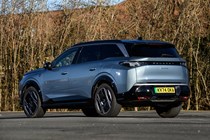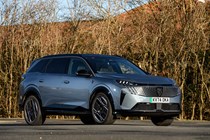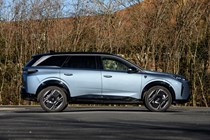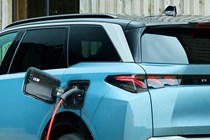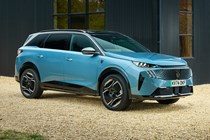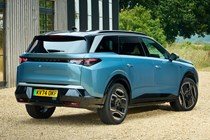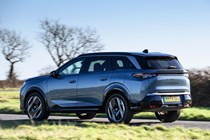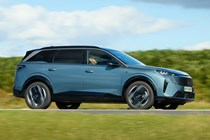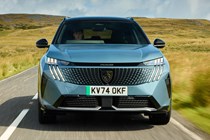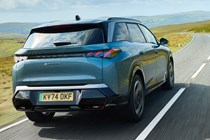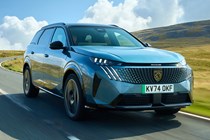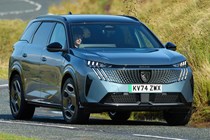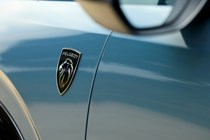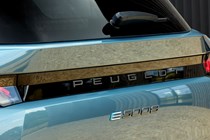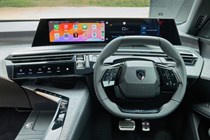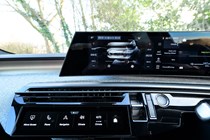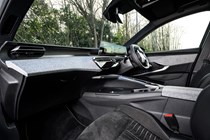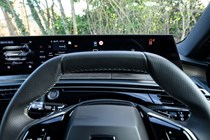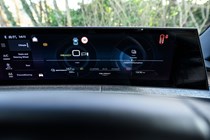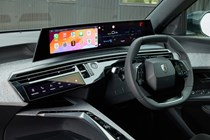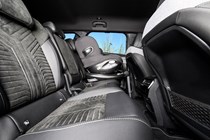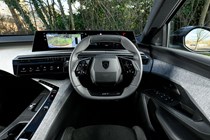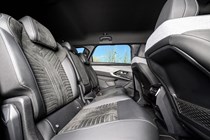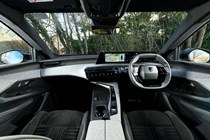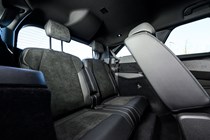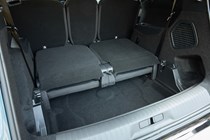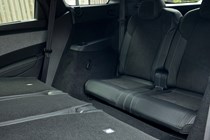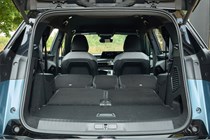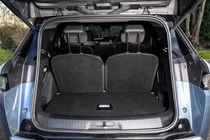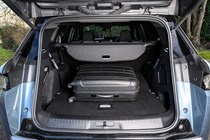
Peugeot e-5008 engines, drive and performance
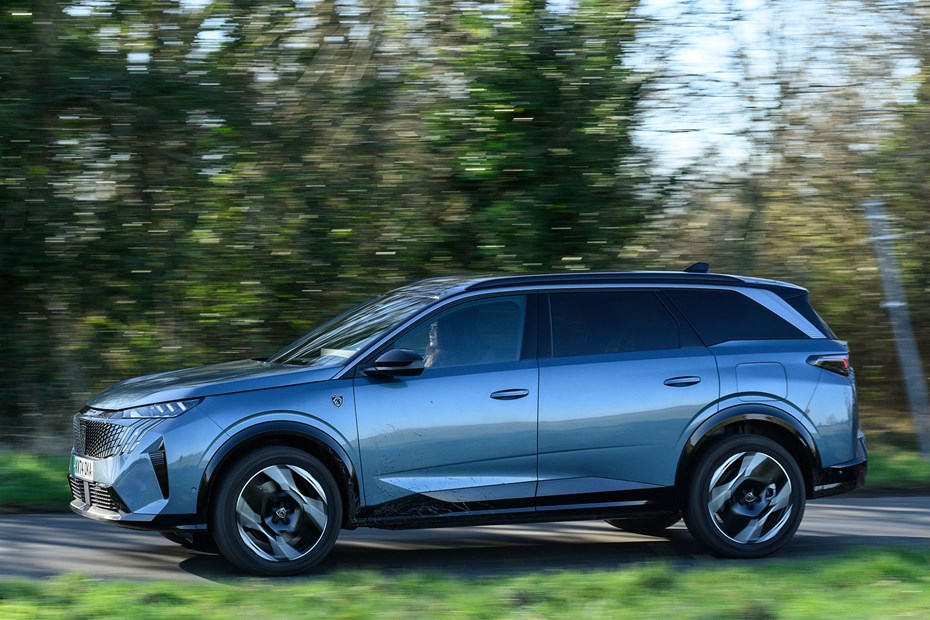
- Two electric powertrains (for now)
- One with 213hp, one with 231hp
- Two battery pack sizes
Electric motors
Currently, Peugeot only offers two versions of the E-5008. The base model is powered by a 73kWh battery pack and a single 210hp electric motor on the front axle. It serves up a 0–62mph time of 9.7 seconds and a maximum electric range of 339 miles.
If you need a bit more range, Peugeot will sell you an E-5008 with a 97kWh battery and a slightly more powerful 231hp electric motor. The extra battery capacity boosts the car’s official range to 414 miles – but the extra weight means its 0–62mph time is barely any faster at 9.6 seconds, despite the power increase.
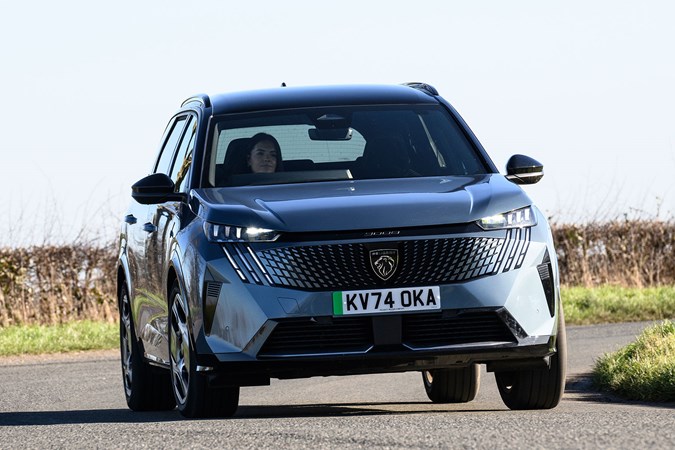
By the time spring 2025 has sprung, Peugeot will have launched a dual-motor, four-wheel drive version of the E-5008 with 320hp. It’ll be pitched as the performance variant, and it’ll use the smaller battery pack for the weight benefit. We’re yet to have a go in one, but we’ll update you as soon as we have.
What’s it like to drive?
- It’s heavy – and it feels it
- Steering is far too quick
- Small wheel compounds issue
It’s not one for keen drivers, that’s for sure. The E-5008 has a serious weight problem. It weighs 2.2 tonnes before you step into it which, to put that into perspective, is just 200kg shy of the leather-lined isolation chamber that is the Range Rover V8. And the Rangey is better prepared to deal with its heft, as it has twice the horsepower and quite possibly the most intelligent air suspension system I’ve ever encountered.
This Peugeot feels rather lumpen. Its sheer gravity blunts its acceleration, while its basic (and rather firm) passive dampers are out of their depth on twisty, rutted roads. They didn’t feel up to the task of controlling the car’s bulk, especially upon encountering a bump mid-way through a corner when they were already under load.
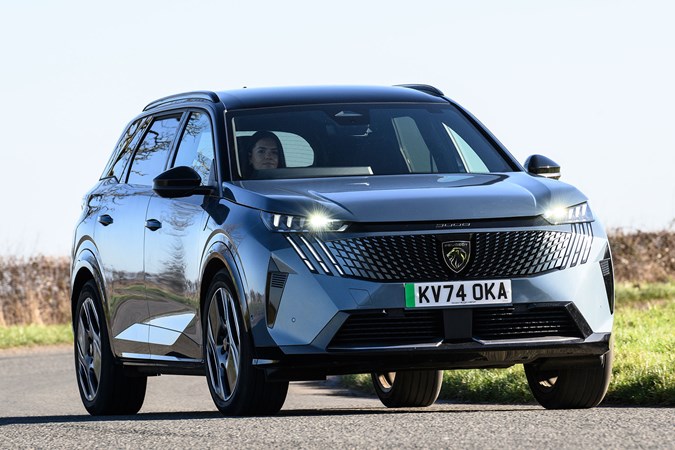
It’s also worth remembering that I formed these opinions with just me on board. The dull acceleration and straining chassis will only worsen once you pile your extended family and all their luggage into the car. At least on smooth roads, it settles down into a quiet cruise.
The E-5008’s steering system is a little too quick for my liking, too. The issue is compounded by the car’s tiny steering wheel, as that requires less twirling to create a bigger movement at the rack.
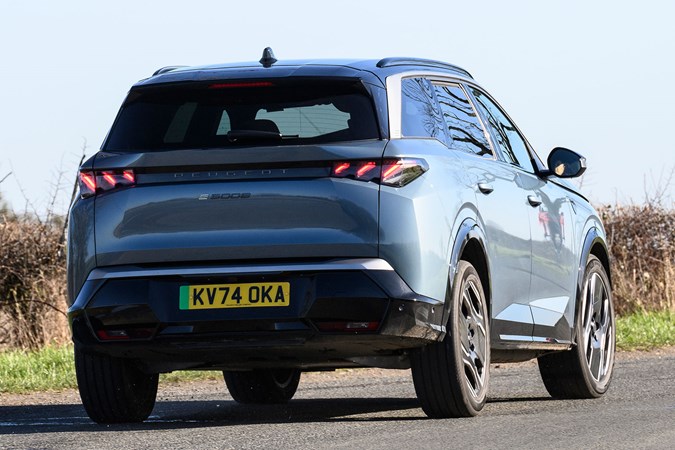
The slightest twitch at the wheel will make the E-5008 want to change lanes, which is a tall order for a chassis that’s already screaming under the weight of three classic Minis. The E-5008 would be much easier (and smoother) to drive if Peugeot had simply slowed down the ratio and fitted a normal size wheel.
And before you all write in to tell me that I’m expecting too much of Peugeot, there are seven-seat electric cars on the market that handle properly. The Volkswagen ID. Buzz feels far nimbler than its enormous body would suggest, especially in rear-wheel drive form. It’s the same story with the Kia EV9 Air and the Ford E-Transit Custom.



